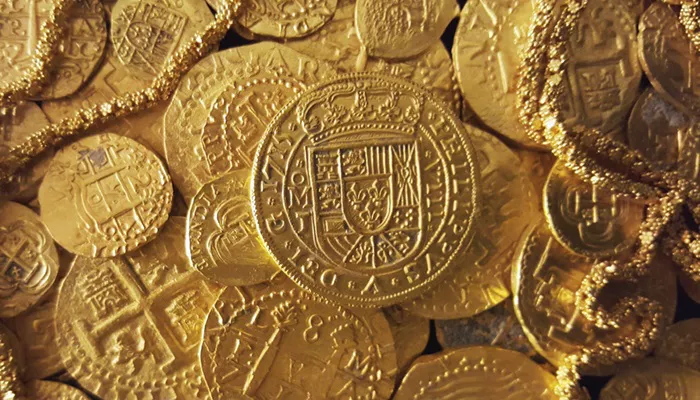In a stunning turn of events, two amateur freedivers uncovered a significant archaeological treasure while vacationing in Xàbia, Spain. Brothers-in-law Luis Lens and César Gimeno, who had set out to clean the ocean floor, stumbled upon a cache of 1,500-year-old Roman gold coins, an unexpected discovery that has captivated the archaeological community.
The pair was collecting trash from the seabed when they noticed a small glimmer in the sand. Initially mistaking it for a modern coin, they soon realized it was far more significant—part of a collection of well-preserved Roman gold coins from the late years of the Western Roman Empire. Lens described the moment, recalling, “I thought I had found what looked like a 10-cent coin. It was in a small hole, like a bottleneck.”
Upon closer inspection, they identified the coin as bearing the face of a Roman figure. Realizing the potential historical importance of the find, the divers returned with a Swiss Army knife and carefully retrieved eight coins. The discovery prompted them to preserve the coins in a glass jar filled with seawater and alert local authorities the following day.
The find sparked a swift response. A team of archaeologists from the University of Alicante, the Spanish Civil Guard Special Underwater Brigade (GEAS), and the Town Council of Xàbia soon conducted further dives to examine the site. What they uncovered was even more remarkable: a total of 53 gold coins dating back to the late 4th and early 5th centuries, a period marking the decline of the Roman Empire. In addition to the coins, the team also found three copper nails and deteriorated lead fragments, believed to be remnants of a sea chest that once contained the treasure.
The coins, which remain in exceptional condition, bear inscriptions of several Roman emperors: Valentinian I (3 coins), Valentinian II (7 coins), Theodosius I (15 coins), Arcadius (17 coins), and Honorius (10 coins). One coin remains unidentified.
Professor Jaime Molina, the lead archaeologist from the University of Alicante, called the discovery “one of the largest sets of Roman gold coins found in Spain and Europe.” He emphasized its historical significance, stating that the find offers new insights into the final phase of the Roman Empire’s collapse.
The discovery has raised intriguing questions about the circumstances surrounding the hoard’s burial. Experts speculate that the coins were deliberately hidden during a time of crisis, possibly to protect them from invading barbarian groups. Professor Molina explained that there are no remains of sunken ships in the area, suggesting that the coins were concealed voluntarily, likely by a wealthy landowner trying to safeguard their fortune from the advancing Alans. This period, around 409 AD, marked the violent arrival of barbarian tribes such as the Suevi, Vandals, and Alans in Hispania, signaling the end of Roman control over the Iberian Peninsula.
“This finding speaks to a moment of fear and insecurity, marking the collapse of the Roman Empire in Hispania,” Molina said. The discovery offers a vivid snapshot of a world in turmoil as the Western Roman Empire crumbled under the pressure of barbarian invasions.
Related topics:
- India Surpasses China in Gold Purchases, Buying 51% More in Three Months
- Gold Rates Skyrocket in Chennai on Diwali, 24K Gold Exceeds Rs. 81,000 Per 10 Grams
- Bitcoin Poised for a Surge Amid Gold’s Delivery Delays, Expert Claims


